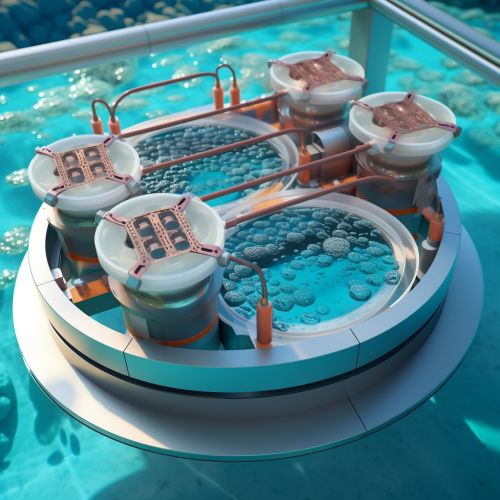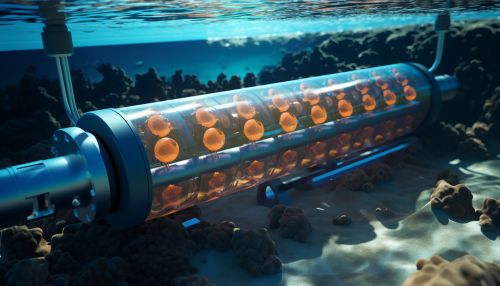Microbial Desalination Cells (MDCs)
Introduction
Microbial Desalination Cells (MDCs) are a type of MFC technology that simultaneously treats wastewater and desalinates saline water using bacteria. This technology is a promising solution for water scarcity issues, as it can produce potable water from saline sources while also generating electricity.


Principle of Operation
The operation of MDCs is based on the principle of bioelectrochemical reactions, where bacteria oxidize organic matter in the anode compartment, releasing electrons and protons. The electrons travel through an external circuit to the cathode, while the protons migrate through a cation exchange membrane (CEM) to the middle compartment, which contains the saline water. This migration of ions leads to desalination of the saline water.
Components of MDCs
MDCs are typically composed of three main compartments: the anode, the desalination, and the cathode compartments. Each compartment plays a crucial role in the overall operation of the MDC.
Anode Compartment
The anode compartment of an MDC contains the electroactive bacteria that oxidize the organic matter in the wastewater. This oxidation process releases electrons and protons, which are then transported to the cathode and desalination compartments, respectively.
Desalination Compartment
The desalination compartment is located between the anode and cathode compartments and is separated from them by a CEM and an anion exchange membrane (AEM), respectively. The saline water in this compartment is desalinated as the protons from the anode and hydroxyl ions from the cathode migrate towards it.
Cathode Compartment
The cathode compartment is where the electrons from the anode are used to reduce oxygen or other electron acceptors. This reduction process produces hydroxyl ions, which migrate towards the desalination compartment, aiding in the desalination process.
Advantages of MDCs
MDCs offer several advantages over traditional desalination and wastewater treatment methods. These include energy production, lower energy consumption, reduced chemical usage, and potential for nutrient recovery.
Limitations and Challenges
Despite their advantages, MDCs also face several challenges that need to be addressed for their widespread application. These include low desalination efficiency, biofouling, and the need for optimization of operational parameters.
Future Perspectives
Research on MDCs is ongoing, with efforts focused on improving their efficiency and overcoming the current limitations. With further advancements, MDCs have the potential to become a sustainable solution for wastewater treatment and desalination.
